“Audio processing is half science & math, and half black magic”, Omnia’s Frank Foti says in part 2 of our interview, in which we’ll also discuss PPM and Voltair.
Following part 1 of this article, we’ll cover how to generate loudness without destructive distortion, and leverage processing for ratings & revenue. Foti hints that the Portable People Meter debate in the States isn’t over yet. And that Voltair may just be the first step in Omnia’s product line for encoding optimisation. But first: AC vs. CHR in radio signal processing.
“It has taken the sweet spot and made it huge over a wide range of material”
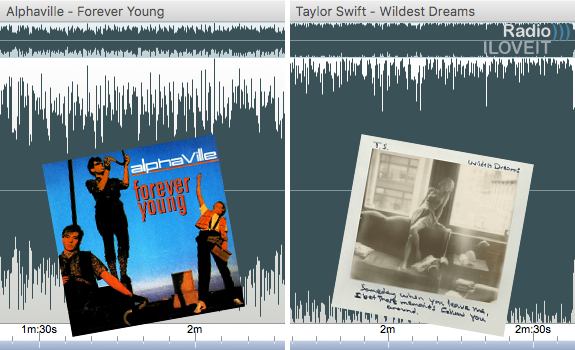
Going from an 80s classic to a (re)current usually requires lots of dynamic gain control and dynamic equalisation control – even if the dynamic difference between (the loudest part of) the above songs from 1984 and 2015, here seen in WavePad, turns out to be less than I expected when I mentioned these examples during the interview (images: Thomas Giger, WEA, Republic Records)
Maintain your sound consistency
Focusing on best practices of audio processing for specific formats, what do you think is a good setup for Adult Contemporary radio stations?
“Something that’s competitively loud, but not overly done on bass and treble”, Foti says. “A nice generalised sound, so you have source-to-source consistency. We’re dealing with material that’s not over the top. It would almost be like processing for Beautiful Music, but on steroids.”
The interesting thing about AC, I think, is that the source material can be so different. You may go from Alphaville’s Forever Young, with especially during the intro a lot of noise as it was recorded on tape, to the latest Taylor Swift, which is obviously heavily processed.
“Hypercompressed.”
Regulate your EQ settings
So one song can be very different from another one. How do you cope with that?
“Our latest software generation called G-Force does take that into consideration. There are two items that we’ve added. One is licensed from our friend Hans van Zutphen, who developed the Perfect DeClipper. The other one is unique to our product. It is an idea that I created many years ago in a rough form, and that Cornelius Gould took further: Dynamic EQ, going into the multi-band AGC.” He states that, no matter how the equalising curve is set, G-Force will keep each of those frequency ranges within a certain range: “It doesn’t care about the input level as it operates without any thresholding.” Omnia’s Dynamic EQ is said to, for example, add some bass to a song lacking low frequencies; taking it to the level defined in the EQ curve, and therefore giving the station a more consistent sound. “It has taken the sweet spot and made it huge over a wide range of material; old, new, and independent of recording quality.”
Keep your signal clean
Moving from AC to the other side of the mass-appeal format spectrum, we get to CHR. Top 40 stations often have a cool image, including a loud sound. Interestingly, Contemporary Hit Radio stations usually have a young female as target listener, and it’s said that (young) women dislike heavy loudness and high frequencies, as their ears seem to be sensitive to it.
“Only if it’s distorted”, Frank Foti specifies. “I’ve never met anyone who hasn’t liked it loud, other than if they’re feeling pain in their eardrums. But if it’s distorted, it doesn’t matter what the level is. That’s the key.” Getting into an ambitious mood, he continues: “That’s where I challenge anyone else to try to achieve the level of loudness that any Omnia, be it the 7, 9, 11, or the work that Hans has done, is capable of doing and generate no distortion.”
“It’s about what’s delivered to it”
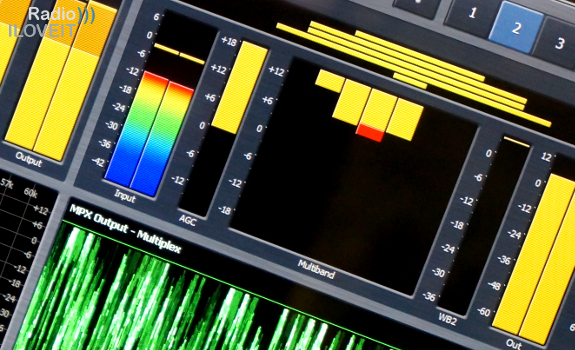
The AGC signal that’s going into the clipping system has to be consistent (image: Thomas Giger)
Choose your personal approach
I guess each company has its own philosophy. In my recent talk with Bob Orban, where I asked him how he would describe the differences between Orban and Omnia, he replied: “Frank makes a good box”, [but he has more like] “a rock ’n roll attitude towards things”.
“Yes, I grew up on rock ’n roll; The Beatles, The Who, Springsteen; you name it. But why is it that the most important Classical stations around the world are using Omnia?” From the top of his mind, he mentions WFMT Chicago, WCLV Cleveland, WCRB Boston, and Swedish Radio’s P2 as part of his clientele, and proves that he could have been a great salesperson for his company, would he not have been CEO :-). “Omnia processing is capable of providing incredible sound, from as relaxed as Classical music to as loud as Pete Townshend smashing a guitar.”
Level your clipping amounts
So how do you get to loudness without distortion?
“The clipping system is where the rubber meets the road, but it’s about what’s delivered to it. You have to get the levels right. If the automatic gain control, which works with good RMS control and then good peak limiting, is not operating as best as possible, then the clipping will be inconsistent; sometimes it will be loud and comfortable, and sometimes it will be loud and distorted. Cornelius Gould and I have put years into making sure that the dynamic section with compressors and limiters operates with as much efficiency and as less distortion as possible”. Foti then explains the second step of the process: offering this balanced signal to the clipping system. “In of itself, it is designed to minimise harmonic distortion and intermod distortion. Now we’re able to push the clipping system to a level that’s probably a bit harder than the ear would normally withstand, but we’ve masked out the distortion as much as possible.”
Streamline your audio signal
You mentioned RMS. What is that exactly?
“RMS stands for Root Mean Square. Let’s consider a sine wave. We can look at its level from peak to peak, which is what a limiter does, or at the average level over a period of time. The human ear is an average-level detector, so if we’re able to do this averaging in the compression and use this function called RMS, we’re able to provide a consistent loudness level that the ear will pick up. Remember: Audio processing is half science & math, and half black magic — for you, it might be the tweaking of parameters; for me, it’s both the parameters and what’s inside the algorithms.”
“Look at it like a sandbox with walls around it”

Play around as much as you can, getting close to pushing boundaries (image: Flickr / rumolay)
Amplify your loudness further
Frank Foti claims that Omnia has one other feature for FM radio processing that their competition does not deliver. This “1 dB of added loudness for free” is based on the fact that 100% modulation consists of 10% pilot signal and 90% stereo sound. “We came up with a way to bring the pilot into the signal, where, even though we’re bringing the pilot into the signal, we’re allowing the audio to go to 100% modulation all the time. That added 10% of audio, as it’s already been compressed and processed, is 1 dB in extra loudness.”
Respect your local rules
Speaking of loudness, many European countries adhere to ITU BS.412 multiplex power limitations to keep radio stations and TV commercials at ‘minus such and such’. How do you achieve a great-sounding station when you have to stay within these borders?
“I know there is this PLOUD group, and there’s some interest for it here, but I would be shocked if the US would ever adopt a loudness regulation. Partly because here in America, channel spacing is much more wider than in Europe, with 200 kHz vs. 100 kHz. The desire is to minimise possible co-channel interference due to modulation.” His advice is to first understand the rules, and make adjustments to the audio processing to get an effective sound, yet stay within the borders. “Look at it like a sandbox with walls around it. What can we do to still have as much fun?”
Boost your market share
An interesting topic, I think, is audio processing and audience reach. Do you believe that a well-processed station will do better in the ratings?
“I’ve been fortunate to get to know many good program directors and radio consultants, all which have said: as long as we’re not doing something with processing that’s forcing people subliminally to tune out, then that’s a good thing. The potential is there to augment ratings. The added, subliminal effect will contribute to amplify a great radio brand.” Foti acknowledges that in the end, it’s mainly about engaging content. “How many of us have listened to a station where the signal might have been far away, but you just had to listen to that sporting event, concert, or interview? You didn’t care there was static, because the content was so great! It comes down to having a good signal and coverage, but on top of the list are great content and presenters. That’s the stuff that makes great ratings. The audio helps.”
“The income that it can turn in the form of added advertising is off the charts”
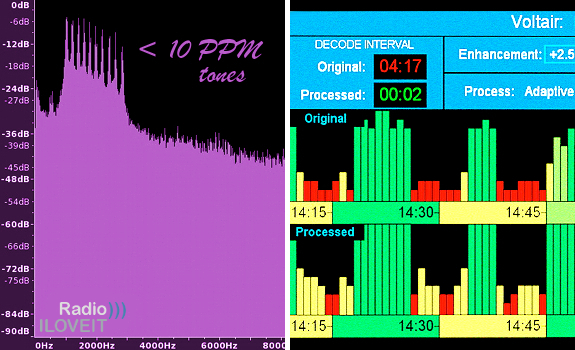
Frank Foti heard from an expert client that growing a rating point (or even less) can mean a big increase in a radio station’s sales volume (images: Thomas Giger, 25-Seven Systems)
Determine your reference point
There’s a possible conflict between sounding amazing, which will enhance your on-air branding along with your jingles, music, personalities and content, and avoiding fatigue. How do we find the balance between a great sound and keeping listeners tuned in?
“It’s best to appoint a key person to be the voice of reason, and let him determine how you sound. I’ve never found the concept of processing by committee to work, because when you put five people in a room, you will get five different opinions. Also, and this is very important, there needs to be a known, acceptable, good-quality monitoring point. I can’t tell you how many major stations I’ve visited around the world, where I asked: what’s the reference point? ‘Uh… it’s the general manager’s car.’ Can we go listen to it? ‘No, he’s on vacation…’ If you’ve got good tools, someone with good ears, and a good reference point, there should be no reason why you can’t create great-sounding station.”
Up your PPM game
Processing and Portable People Meter, I think that’s a fascinating topic to cover as well.
“Haha. O, yeah!”
We’ve heard of the Nielsen & PPM versus Radio & Voltair story here in Europe, where we also have PPM markets, such as Belgium, Switzerland and Scandinavia. Do you have some boxes installed over here, by the way? Or is it more like a US & Canada kind of thing?
“Voltair is predominantly in the US. I know there are some in Scandinavia. Exactly where, I don’t know. There are some in Canada.” A few days before this interview, Frank Foti got a visit from a PD of a large American radio operator. “They have a very sophisticated approach to the PPM, the use of Voltair, and how it integrates with audio processing, and they can point to actual data showing when they’ve made various changes, and where they see increases in PPM performance. He said to me: in this day and age, when you bump a rating point — or a tenth of a point in some larger markets, the income that it can turn in the form of added advertising is off the charts.”
Preprocess your PPM tones
What insights have you got from working with radio stations in PPM markets?
“First of all, they want to maximise the watermark performance, but at the same time, they don’t want it to be heard. There are some trade-offs.” Foti credits his colleagues Cornelius Gould and Barry Blesser for finding the best place to insert the PPM watermark. “A lot of radio broadcasters inserted the watermark in front of an audio processor, and the processor goes into a transmission path. We were the first to come up with insert points.” They found that it’s good to have some multi-band control in front of the PPM generator, and wrap the Voltair device in and around that. “The PPM frequency range is between 1 and 3 kiloHertz, so when there’s more energy in the 1-3 kHz range, it helps with the average that the watermark is going to go on.” He adds that time duration matters as well, because there is a 400 ms window where the PPM generator will analyse the audio signal to determine if the watermark can be inserted. (For details about their PPM research and Voltair technology, you can watch Omnia’s NAB 2015 presentation.)
“I don’t think that the drama is over yet”
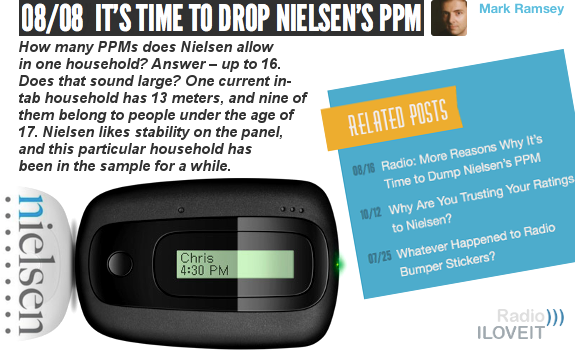
Enhanced CBET may not be the end of the PPM soap, as not only radio operators, but also well-known consultants are sharing their concerns (images: Mark Ramsey Media, Nielsen)
Keep your watermark inaudible
It goes to show that Foti began his career as a radio host. He definitely knows how to do a pre-sell that will keep an audiences hooked. “Stay tuned. There’s stuff that we’ll be sharing with the world, in the not too distant future, that will further enhance how PPM can be looked at, monitored, and possibly automatically, dynamically adjusted, on the fly. The goal is to maintain good watermark levels, yet not overdue it. I live in Cleveland, Ohio, and when I listen to a baseball game, I can pick up PPM tones. When the play-by-play host doesn’t talk, I can hear this watery sound on the crowd noise. That is the watermark.” It indicates that Omnia Audio / 25-Seven Systems might be working on a solution to reduce this unwanted side effect. Referring to the heated discussions between ratings provider Nielsen and the US radio industry, which seemingly calmed down after Nielsen introduced enhanced CBET, he expects that there will be much more to come. “I don’t think that the drama is over yet.”
The play has only just started?
“In some ways, yes!”

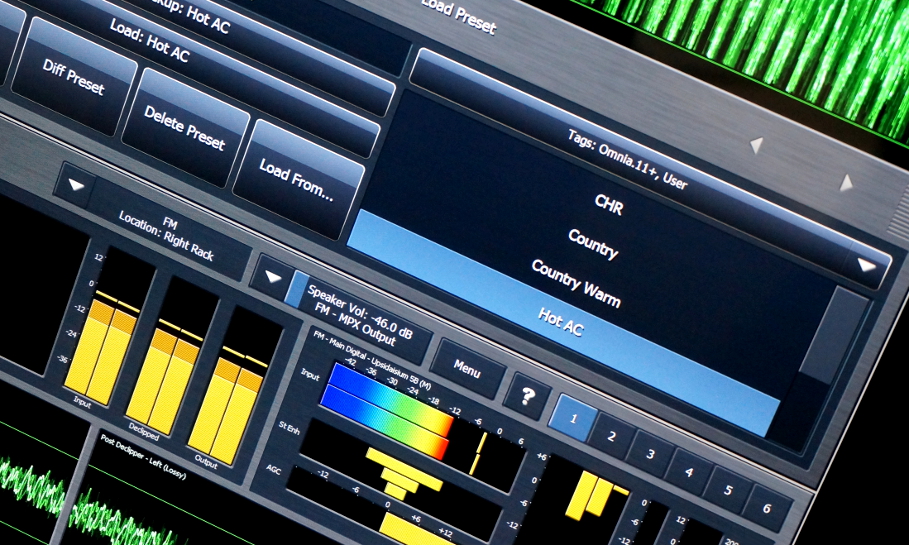




These tones make radio completely unbearable after a few hours of being exposed to it! Once you realize there is a metal pipe and a chinese gong clanging along with everything, it can give you a migraine just hearing in in passing!
Trying to give audio a watermark using tones that lie in the MOST SENSITIVE range of human hearing is a BAD IDEA! It might work if you could encode them in high frequencies, but the current use of tones make radio stations sound like a scrap metal junkyard!